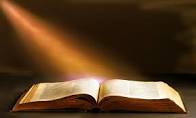Articles and Notes
2 John Intro
Introduction In the 1st century A.D., the early church enjoyed remarkable growth and spread throughout the world at that time (Ac 8:5; Ro 10:14-18; Col 1:5-6,23). What accounted for this spread of the gospel? There were likely several factors, but one was the hospitality of the early Christians... * Paul was able to travel and depend upon Christians opening their homes to him - cf. Phm 1:22 * He encouraged Christians to support those who were teachers of good things - Ga 6:6 * John commended and encouraged those who provided lodging and support for traveling missionaries - 3Jn 1:5-8 Showing such hospitality was not without its potential for supporting the spread of false teachers and their doctrines. It would be easy for teachers of error to take advantage of the Christians’ natural propensity to be hospitable to strangers. Thus it was necessary to counsel Christians to use proper discernment in sending traveling teachers on their way. The Second Epistle of John, consisting of just one chapter, addresses this very problem. AUTHOR The author identifies himself as "The Elder", believed by most conservative scholars to be the apostle John. The internal evidence that supports this conclusion: * The three epistles attributed to John utilize much the same language and ideas * All bear similarity to concepts and language to the Gospel of John * The term "elder" would be a fitting description of John as the author writing in his old age As for external evidence, Irenaeus, a disciple of Polycarp (who in turn was an associate of John), quotes from it and mentions the apostle John by name. Both Clement of Alexandria and Dionysius, living in the third century A.D., credit John with being the author. RECIPIENTS The epistle is addressed to "the elect lady and her children." Taken literally, the epistle is written to a particular woman and her children. Many scholars understand this to be the case (e.g., Plummer, Ross, Ryrie). Some have even supposed the Greek words for "elect lady" may refer to given names, such as: Electa the Lady, The chosen Kyria, Electa Kyria. Taken figuratively, it could refer to a local church. Scholars who hold to this view include Brooke, Bruce, Marshall, Stott, and Westcott. They understand that "elect lady and her children" (1) and "children of your elect sister" (13) refer to two particular congregations. Desiring to allow the most obvious meaning of Scripture to be the most correct meaning, I am willing to accept the literal view. PLACE AND DATE Ephesus is usually suggested as the location from which John wrote this epistle, as he was known to live there in the later years of his life. Estimation of the date of writing varies widely, some placing it before the destruction of Jerusalem (70 A.D.). Most however place it around 90-95 A.D. PURPOSE AND THEME In such a short letter, the purpose is rather straightforward and twofold: * Encourage brotherly love, and keeping the commandments of God - 2Jn 1:5-6 * Warn against supporting or encouraging false teachers - 2Jn 1:10-11 Based on 2Jn 1:7, the false teachers were likely precursors of the Gnostics (see introduction to 1st John). As for the theme, I would suggest: Walking in truth and love OUTLINE Here is a simple outline of the book, from the ESV Study Bible... Greeting: The Elder’s Love (1-3) The Elder’s Joy And Request (4-6) The Elder’s Concern (7-8) The Elder’s Warning (9-11) Closing: The Elder’s Farewell (12-13) REVIEW QUESTIONS 1) Who is author of The Second Epistle Of John? - The Elder, likely John the apostle who wrote the gospel of John 2) Who were the original recipients of this epistle? - Literally, the elect lady and her children; figuratively, a local congregation 3) When was it written? - Most date it from 90-95 A.D. 4) What has been suggested as its two-fold purpose? - To encourage brotherly love, and keeping the commandments of God - 2Jn 1:5-6 - To warn against supporting or encouraging false teachers - 2Jn 1:10-11 5) What has been suggested as its theme? - Walking in truth and love 6) What are the main divisions of this epistle as outlined above? - Greeting: The Elder’s Love (1-3) - The Elder’s Joy And Request (4-6) - The Elder’s Concern (7-8) - The Elder’s Warning (9-11) - Closing: The Elder’s Farewell (12-13)
